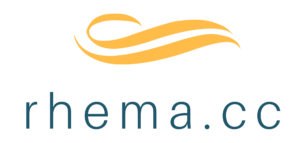Recruitment Tides are Changing: Here’s What You Need to Know
By: Michael McQueen
The tides are changing in the world of recruitment, as the impact of AI and the post-pandemic workplace shifts continue to proliferate.
The process of attracting workers, advertising jobs and adjusting workplaces is becoming increasingly complex as these forces change the way we have grown used to doing business. Here’s what you need to know.
Generative AI & The Job Hunt
As with every industry at the moment, recruitment is facing major disruption at the hands of AI. While some recruiters may lose jobs lost to the technology, most will find that their work is made much more efficient, precise and free of bias. The simplest way it will improve efficiency is by automating the repetitive tasks that recruiters must engage in, such as direct messaging potential workers, crafting job outlines and personalising the responses to applicants.[1]
Not only will it help to craft these job outlines, but it will likely write them far better, and far more quickly. More significantly, the outlines it produces will be more likely free of the human bias that tends to get written into job outlines, and thus into applicants and employees. Especially with positions that are stereotypically filled by a particular demographic, job descriptions are often written with those characteristics in mind. AI can adapt the language to avoid non-inclusive terminology and jargon.[2] AI will also be better able to locate keywords focused on candidates’ skills rather than more superficial credentials like university degrees that are more likely to catch the human eye.[3]
Equally important for recruiters to know is the impact generative AI will have on job hunters. As much as recruiters use the technology to sift through resumes, applicants will use it to write them – meaning their applications are likely to be precisely crafted to match the job ads and the jargon used by recruiters. Not only this, but the job search itself will be aided. In conversation, people can ask generative AI for specific job advice based on their skills, experience and interests and it will be able to point them in the direction of precisely suitable industries and roles. Such insights offer individuals at every stage of their careers ways of being proactive in seeking out the roles, training and education that would best empower them.[4]
The Great Attrition & New Worker Expectations
While much of our world has returned to normal following the pandemic, the behaviour of workers is a trend that just won’t settle. The Great Resignation came with the era of quiet quitting, and the employee-driven market of the post-pandemic world has also been dominated by workers with fundamentally different expectations than they had before. 40% of workers globally say they might leave their jobs in the near future.[5]
Among employees, the priorities of pre-pandemic times are persisting, as are the traditional ways of attracting workers. Job titles, advancement and compensation remain the go-to methods of appealing to potential candidates, despite the fact that the portion of the market that would be most attracted to such factors has diminished.
In a recent study, McKinsey & Company broke the job market into five distinct personas. These ‘traditionalist’ personalities, those drawn primarily to job security, prestige and compensation, remain a significant portion of the workforce, but still not enough to fill all the positions open. Traditional recruitment strategies work best with this group, as do the traditional appeals. However, the remainder of the workforce is a mix of self-employed individuals gig workers, carers and students, and is proving to be increasingly difficult to reach.[6]
The largest persona which emerged from this studied were the ‘do-it-yourselfers’, and these are the ones recruiters are going to need to shift gears for. While the traditionalists value the conventional incentives, this group values flexibility above all else. During and following the pandemic, this group sought out new positions or turned to part-time or gig work in search of greater autonomy. The other groups that the study revealed indicated similar workplace priorities of increased flexibility, meaningful work and higher compensation.[7]
Among traditional recruiters, the challenge in attracting this large non-traditional cohort will be finding ways to make traditional workplace arrangements appealing. Ultimately, it is freedom that these workers crave, and so much of the solution will centre around designing work that can be autonomously conducted and giving employees a much greater level of choice in their workplace routines. Measuring effectiveness by outcomes rather than activities will be one way of doing this, as it achieves goals while allowing workers the freedom to decide how these goals are achieved.[8]
It is these metrics of success that employers and recruiters are going to need to adjust in order to keep up with the expectations of workers. Traditional metrics of productivity will need to be adjusted to measure the value rather than the volume of work delivered. 86% of workers say they want to work for an organisation that prioritises outcomes over output. They want to feel free and trusted to conduct their work where and how they choose.[9]
Across the board, flexibility is the name of the game for recruiters. And in order to offer this flexibility, employers are going to need to focus their efforts on building a strong trust relationship with their workers. Workers need to be able to trust that their employers understand their complex living circumstances, responsibilities and abilities, and need to feel trusted to complete their work with autonomy.
With tech and market trends shifting the ground we have stood on for decades, now is the time for recruiters and employers to take stock of their systems, and reconsider the way things have always been done. Those who are able to use AI to their advantage and give the new generations and cohorts of workers the space to shine are sure to reap the rewards in the years to come.
[1] Coffee, P 2023, ‘AI Set to Upend the Talent Search at Ad Agencies and Brands,’ Wall Street Journal, 7 August. [2] Magloff, L 2023, ‘AI makes job ads more inclusive,’ SpringWise, 16 August. [3] Hancock, B, Schaninger, B & Yee, L 2023, ‘Generative AI and the future of HR,’ McKinsey & Company, 5 June. [4] Hancock, B, Schaninger, B & Yee, L 2023, ‘Generative AI and the future of HR,’ McKinsey & Company, 5 June. [5] De Smet, A, Dowling, B, Hancock, B & Schaninger, B 2023, ‘The Great Attrition is making hiring harder. Are you searching the right talent pools?’, McKinsey & Company, 13 July. [6] De Smet, A, Dowling, B, Hancock, B & Schaninger, B 2023, ‘The Great Attrition is making hiring harder. Are you searching the right talent pools?’, McKinsey & Company, 13 July. [7] De Smet, A, Dowling, B, Hancock, B & Schaninger, B 2023, ‘The Great Attrition is making hiring harder. Are you searching the right talent pools?’, McKinsey & Company, 13 July. [8] De Smet, A, Dowling, B, Hancock, B & Schaninger, B 2023, ‘The Great Attrition is making hiring harder. Are you searching the right talent pools?’, McKinsey & Company, 13 July. [9] Minahin, T 2021, ‘What Your Future Employees Want Most,’ Harvard Business Review, 31 May.
Article supplied with thanks to Michael McQueen.
About the Author: Michael is a trends forecaster, business strategist and award-winning conference speaker.
Feature image: Photo by Jason Goodman on Unsplash










